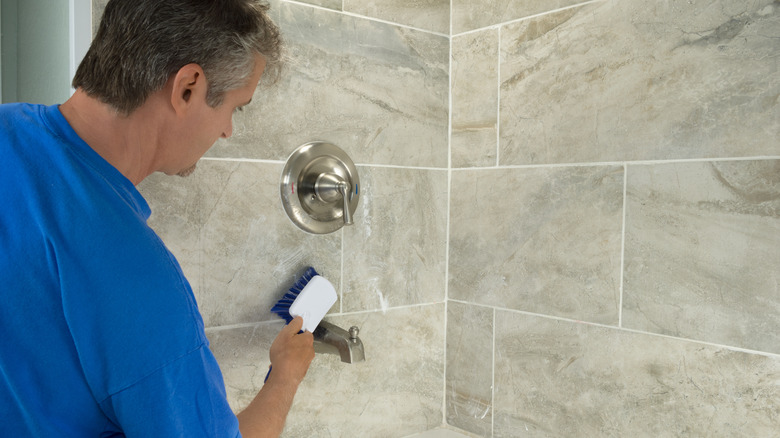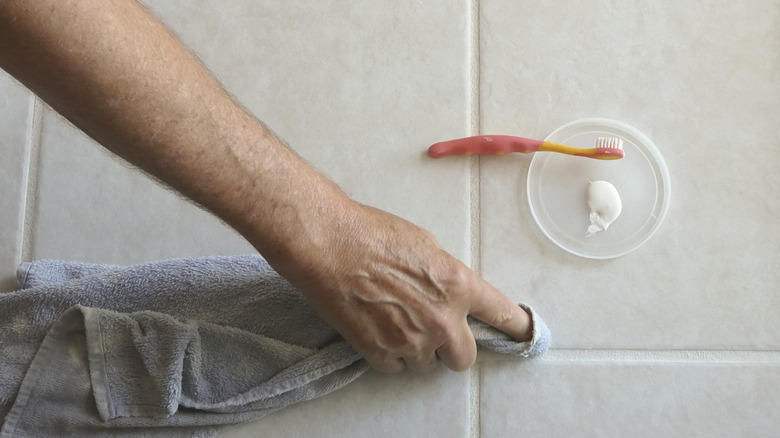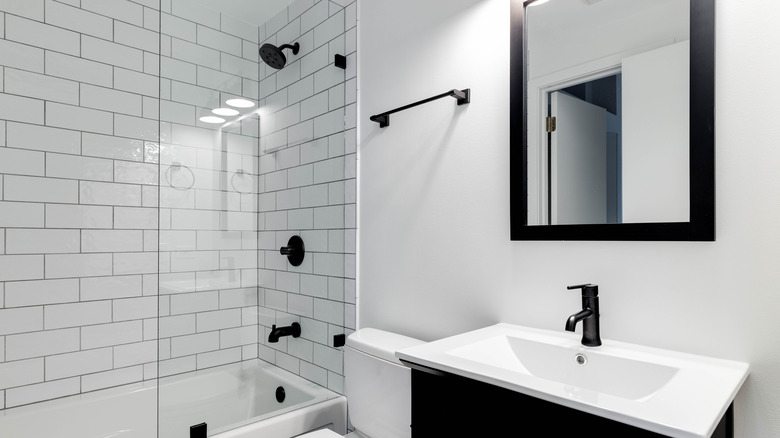Is It Really Necessary To Use A Grout Sealer?
Tiling any space in your house can feel like a pretty big but exciting job. You get to go through the process of picking colors and patterns and watching your room transform. Tile Outlets explains that grout is often used to give your tiles a finished appearance and prevent dirt from falling between the gaps. But is it really necessary to use a grout sealer? Tiling can be quite a big job in and of itself and sealing can feel like one task too many.
Country Floors explains that grout is often made up of cement, water, and in some cases colorant. As it's made of cement it means that it's naturally very porous. Sir Grout writes that this means that, unsealed, it will absorb a lot of the water, dirt, and debris that it comes into contact with. This can mean within a few short months your tiling can go from looking immaculate and clean to discolored and dirty. Spilling red wine onto unsealed grout will leave it with a burgundy tinge and over time, exposure to water, grease, and dirt can cause serious damage.
The Flooring Girl outlines that you have a pretty short window of time between when your tiles and grout first go down and when you should ideally seal them. By getting on top of the grout sealing, you can lengthen the lifespan of your tiling.
It's a really easy job to do yourself
Tile Club explains that it's a really common misconception that sealing grout is a job for professionals. With the right tools and research, you should be able to do it yourself. The Flooring Girl writes that you should wait at least 48 hours to 72 hours after your tiles and grout have gone down before you consider sealing it. In this period try to keep the group as clean as possible and try not to expose it to liquids.
After that period, you can get to work on sealing your grout. Bob Vila outlines that to do the job at home you'll need a toothbrush, sponge, cotton rags, vinegar, dish soap, and grout sealer. Home Like You Mean It also explains that you should invest in some gloves and protective eyewear, and ensure that the area that you're grouting is as well-ventilated as it can be so you don't inhale too much of the chemical fumes.
Clean the grout thoroughly with your toothbrush and water with soap and vinegar. If you don't clean the grout before you seal it you'll lock in dirt. Allow that to dry and then apply your first coat of sealer, working in small areas. Give that an hour to dry and then apply your second coat. Once your second coat has gone down you'll need to leave it for up to 48 hours.
There are some exceptions
Like any job involving different materials, some tile and grout types don't need sealing. The Tile and Stone Journal explains that unlike cement-based grout, epoxy grout is made of a base of resins and fillers. This means that it's waterproof and very strong and resistant to stains. This type of grout can be particularly beneficial in areas that are going to be exposed to a lot of dirt straight away, such as the splashback area of your stove in the kitchen. Zephyr and Stone also writes that as epoxy grout doesn't shrink, discolor, or crack, it works well in bathrooms and showers.
As it already has water-resistant properties, it's a waste of time to seal epoxy grout. However, knowing the type of grout that you have can be tough. If you're sealing or resealing your grout a long period after your tiles were installed, then it can be difficult to know what materials you're dealing with.
However, Grout Magnificent writes that there's a super easy trick that will let you know what type of grout you have and if it's time to seal or reseal it. They share that you need to fill a spray bottle with some water, then spray a light mist of water over an area of the grout and wait two to three minutes. After that period, if the grout has changed color or gotten darker then it's a sign that you need to seal it.


